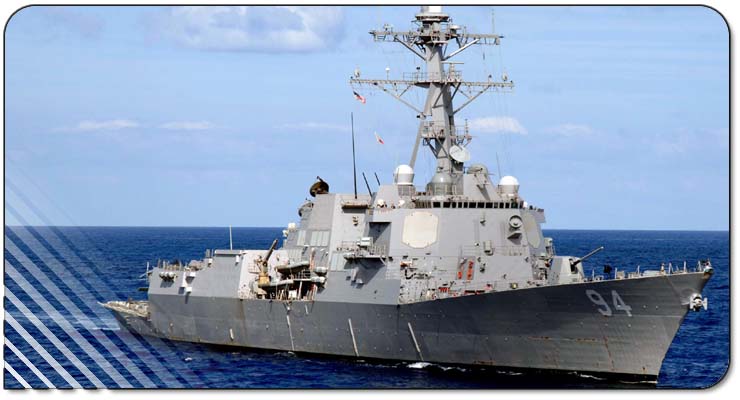Namesake:
Paul H. Nitze
DDG 94's name honors Paul H. Nitze, whose distinguished government
career included serving as the 57th secretary of the Navy from 1963 to
1967. During his time as the Navy secretary, he raised the level of
attention given to quality of Service issues. His many achievements
included establishing the first Personnel Policy Board and retention
task force (the Alford Board), and obtaining targeted personnel
bonuses. He lengthened commanding officer tours and raised command
responsibility pay.
Nitze became a strong advocate for officers' advanced education
opportunities and worked to enhance greater integration of senior Navy
staff by moving the Chief of Naval Operations' office next to his own.
He also worked to ease unnecessary burdens on sailors by relaxing
in-port duty section requirements and hiring civilian custodial
workers.
Born in Amherst, Mass., on Jan. 16, 1907, Nitze graduated "Cum Laude"
from Harvard University in 1928. After working in investment banking
where he was known as a Wall Street prodigy, he left in 1941 to enter
government service. In 1942, he was chief of the Metals and Minerals
Branch of the Board of Economic Warfare, until named director, Foreign
Procurement and Development Branch of the Foreign Economic
Administration in 1943. During the period 1944-1946, Nitze served as
director and then as vice chairman of the U.S. Strategic Bombing Survey
for which President Truman awarded him the Medal of Merit.
For the next several years, he served with the Department
of State,
beginning in the position of deputy director of the Office of
International Trade Policy. In 1949, he was named deputy to the
assistant secretary of State for Economic Affairs. In August of that
year, he became deputy director of the State Department's policy
planning staff, and was appointed director the following year. As
director, Nitze was the principal author of a highly influential secret
National Security Council document (NSC-68), which provided the
strategic outline for increased U.S. expenditures to counter the
perceived threat of Soviet armament.
From 1953 to 1961, Nitze served as president of the Foreign Service
Educational Foundation while concurrently serving as associate of the
Washington Center of Foreign Policy Research, the School of Advanced
International Studies of Johns Hopkins University. His publications
during this period include "U.S. Foreign Policy: 1945-1955." In 1961
President Kennedy appointed Nitze assistant secretary of Defense for
International Security Affairs and in 1963 he became the secretary of
the Navy, serving until 1967.
Following his term as secretary of the Navy, he served as deputy
secretary of Defense (1967-1969), as a member of the U.S. delegation to
the Strategic Arms Limitation Talks (SALT) (1969-1973), and assistant
secretary of Defense for International Affairs (1973-1976). Later,
fearing Soviet rearmament, he opposed the ratification of SALT II
(1979). He was President Reagan's chief negotiator of the Intermediate
Range Nuclear Forces treaty (1981-1984). In 1984, Nitze was named
special advisor to the president and secretary of State on Arms
Control. For more than forty years, Nitze was one of the chief
architects of U.S. policy toward the Soviet Union. President Reagan
awarded Nitze the Presidential Medal of Freedom in 1985 for his
contributions to the freedom and security of the United States.
|

